Homepage / News Details
How important is chlorine treatment to water?
- Categroy:News
- Author:
- Origin:
- Release Time:2020-09-10 14:18
- Views:
【Summary】
How important is chlorine treatment to water?
【Summary】
- Categroy:News
- Author:
- Origin:
- Release Time:2020-09-10 14:18
- Views:
any of us relate swimming pools, and even fun summer time, when thinking about chlorine. Calcium Hypochlorite is the most popular powder sanitizer among private swimming pool owners. It is an inorganic compound with formula Ca(ClO)2. This compound is relatively stable and has greater available chlorine than sodium hypochlorite (liquid bleach). It is a white solid, (although commercial samples appear yellow) that is added in granular or tablet form to pool water to kill germs that can make swimmers sick. It strongly smells of chlorine, owing to its slow decomposition in moist air. It is not highly soluble in hard water, and is more preferably used in soft to medium-hard water. It has two forms: dry (anhydrous); and hydrated (hydrous).
Generally the commercial substances are sold with a purity of 65% to 73% chlorine concentration, mixed with other chemicals present, such as calcium chloride and calcium carbonate, resulting from the manufacturing process. As you can see having a relatively high concentration of chlorine, other than liquid bleach, it tends to be the most cost effective of chlorine sanitizers. As a swimming pool chemical, it is blended with other chemicals less often than other forms of chlorine, due to dangerous reactions with some common pool chemicals. In solution, calcium hypochlorite could be used as a general purpose sanitizer, but due to calcium residue, sodium hypochlorite (bleach) is usually preferred.
Used properly, by well-trained pool operators, this compound destroys germs that are capable of causing numerous health problems for pool users such as diarrhea, swimmer’s ear (a common nasty earache) and various other respiratory, skin and wound infections. Spa and hot tub waters are also disinfected with calcium hypochlorite. We all have accepted this sort of -chemical wonder that makes a healthy environment for water recreation.
The primary things to be aware of are that cal-hypo will raise calcium hardness levels of your water. If water pool water stays too hard for too long, it can cause corrosion to the pool surface. Cal-hypo also has a high pH of about 12. So, acid will need to be added to maintain goal pH levels after adding cal-hypo. Cal Hypo comes in the form of powder or tabs; tabs require a feeder to be introduced to the water. These feeders tend to get clogged with calcium and organic waste buildup, sometimes referred to as “chalking”. The bigger issue with cal hypo, however, is its volatility. It is a very strong oxidizer and fire hazard, and when it is near certain chemicals (other types of chlorine, for example), it can spontaneously combust. Calcium hypochlorite is stored dry and cold, away from any acid, organic materials, and metals. The hydrated form is safer to handle. If mixed with an acid it releases highly toxic chlorine gas.
·Byproducts in pool water: hypochlorous acid (HOCl) + calcium (Ca+) + hydroxide (OH-)
·Available chlorine by volume: 65-75%
·pH: 11.8 – 12.0 (strongly alkaline)
·Formula: Ca(ClO)2
·IUPAC ID: Calcium hypochlorite
·Molar mass: 142.98 g/mol
·Density: 2.35 g/cm³
·Melting point: 100 °C
·Soluble in: Water
As we mentioned, calcium hypochlorite is the main active ingredient of commercial products called bleaching powder, chlorine powder, or chlorinated lime, used for water treatment and as a bleaching agent. In addition of being used to sanitize public swimming pools it is also used to disinfect drinking water. Calcium hypochlorite is being known as one of the allies in the ongoing fight against foodborne disease. It is mixed with water to various strengths to kill germs found on industrial food processing and preparation surfaces–an important role in keeping our food supply safe. Calcium hypochlorite is used to disinfect water in many small water systems serving communities in the developing world.
More than a billion people in the developing world struggle as they have no access to safe drinking water. As a result, diarrhea illnesses cause 1.8 million deaths every year, according to the World Health Organization. Most of those who die are children younger than five years old. The member countries of the United Nations (UN) have set a goal to cut in half the percentage of people in the world without access to safe drinking water by 2015. This is a great challenge considering that poverty in much of the developing world prevents building even simple water systems. To make chlorinated water more available to many of these poor people, point-of-use systems are being distributed.
A point-of-use disinfection system consists of very simple equipment. People who collect their drinking water daily from lakes, rivers or wells are able to disinfect their water before using it. A bottle of liquid or a packet of solid treatment chemicals is provided along with a water storage container. The chemicals, which may include calcium or sodium hypochlorite, are measured into the water container to disinfect. Point-of-use treatment is certainly not as convenient as centralized water treatment, but evidence shows this simple, low-cost method reduces the risk of diarrheal disease and death.
Even in the developed world, point-of-use systems can be a life-saver when natural disasters, such as earthquakes and hurricanes, disrupt water supplies. Clean, safe water is a public health MUST and calcium hypochlorite helps to provide it, especially where it is needed most.
Releate News

Time of issue : 2024-05-08 13:15:35

Time of issue : 2024-04-29 13:33:08

Time of issue : 2024-04-22 08:56:03
CONTACT US
PRODUCTS
CALCIUM HYPOCHLORITE
TCCA
SDIC
BCDMH
FEEDBACK
© 1999-2018 北京网站建设有限公司 Copyright © 2012-2022 All Rights Reserved Powered by www.300.cn 冀ICP备12012949号 津公网安备 12010302002173号 Seo tag

